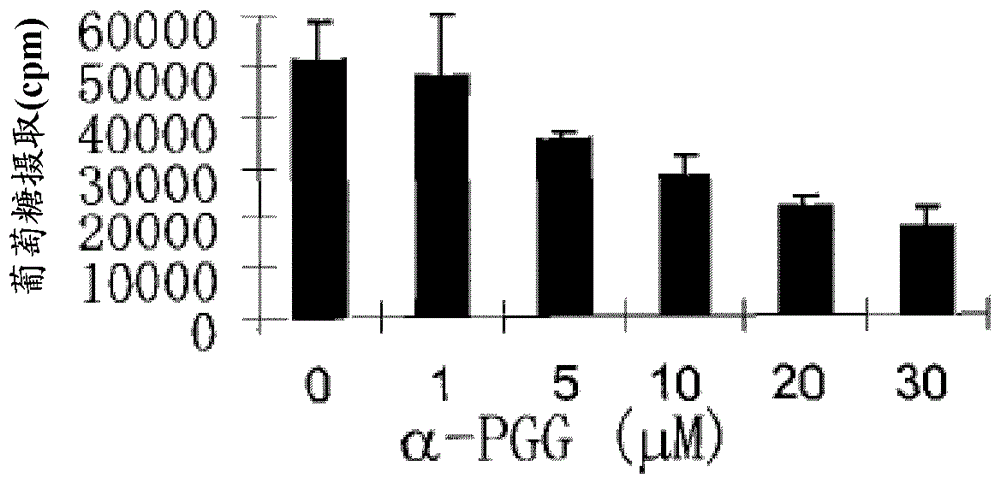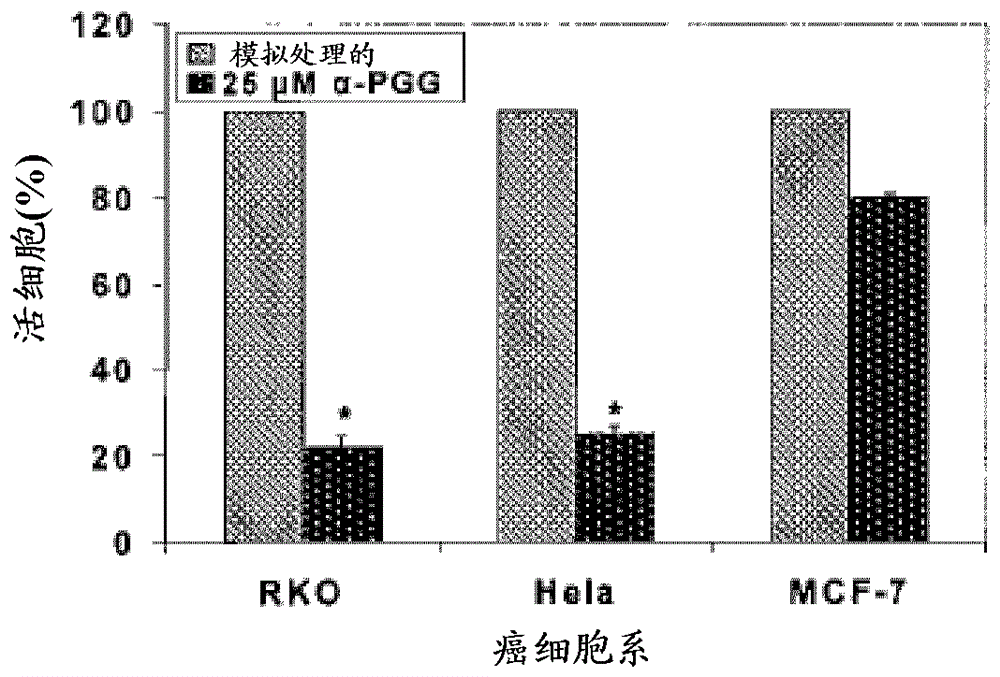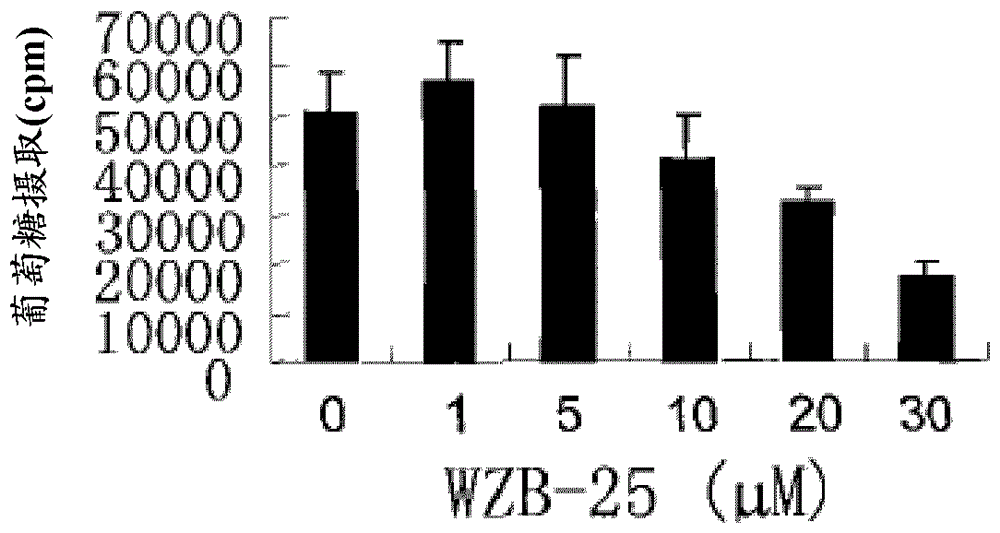Compositions and methods for glucose transport inhibition
A compound and application technology, applied in the field of glucose transport inhibitory composition, can solve the problems of reducing the glucose uptake rate, proliferation and apoptosis of cancer cells
Active Publication Date: 2016-08-10
THE OHIO STATES UNIV
View PDF1 Cites 1 Cited by
- Summary
- Abstract
- Description
- Claims
- Application Information
AI Technical Summary
Problems solved by technology
[0019] It was recently reported that the addition of anti-GLUT1 antibodies to multiple lung and breast cancer cell lines significantly decreased the glucose uptake rate and proliferation of cancer cells, leading to the induction of apoptosis
Method used
the structure of the environmentally friendly knitted fabric provided by the present invention; figure 2 Flow chart of the yarn wrapping machine for environmentally friendly knitted fabrics and storage devices; image 3 Is the parameter map of the yarn covering machine
View moreImage
Smart Image Click on the blue labels to locate them in the text.
Smart ImageViewing Examples
Examples
Experimental program
Comparison scheme
Effect test
Embodiment
[0236] General protocol
the structure of the environmentally friendly knitted fabric provided by the present invention; figure 2 Flow chart of the yarn wrapping machine for environmentally friendly knitted fabrics and storage devices; image 3 Is the parameter map of the yarn covering machine
Login to View More PUM
 Login to View More
Login to View More Abstract
Glucose deprivation is an attractive strategy in cancer research and treatment. Cancer cells upregulate glucose uptake and metabolism for maintaining accelerated growth and proliferation rates. Specifically blocking these processes is likely to provide new insights to the role of glucose transport and metabolism in tumorigenesis, as well as in apoptosis. As solid tumors outgrow the surrounding vasculature, they encounter microenvironments with a limited supply of nutrients leading to a glucose deprived environment in some regions of the tumor. Cancer cells living in the glucose deprived environment undergo changes to prevent glucose deprivation-induced apoptosis. Knowing how cancer cells evade apoptosis induction is also likely to yield valuable information and knowledge of how to overcome the resistance to apoptosis induction in cancer cells. Disclosed herein are novel anticancer compounds that inhibit basal glucose transport, resulting in tumor suppression and new methods for the study of glucose deprivation in animal cancer research.
Description
[0001] related application [0002] This application is a divisional application of the Chinese patent application with the filing date of March 24, 2011, the application number 201180025712.3, and the title of the invention "composition and method for glucose transport inhibition". This application claims the benefit of US Provisional Application No. 61 / 317,062, filed March 24, 2010, the entire contents of which are hereby incorporated by reference. [0003] Statement Regarding Federally Sponsored Research [0004] The National Science Foundation supported this work in part through a collaboration of Innovation Grant (HER-0227907). The US Government may have certain rights in this invention. technical field [0005] The present application relates to compositions and methods for glucose transport inhibition. Background technique [0006] Since 2008, cancer has surpassed cardiovascular disease as the number one killer in the United States, with an estimated 565,650 A...
Claims
the structure of the environmentally friendly knitted fabric provided by the present invention; figure 2 Flow chart of the yarn wrapping machine for environmentally friendly knitted fabrics and storage devices; image 3 Is the parameter map of the yarn covering machine
Login to View More Application Information
Patent Timeline
 Login to View More
Login to View More Patent Type & Authority Applications(China)
IPC IPC(8): C07C43/23C07C205/34C07C69/84A61K31/09A61K45/06A61P35/00
CPCC07C43/23C07C69/84C07C205/34C07C39/367C07C235/56C07D209/08C07D231/12C07D233/64C07D235/18C07D249/08C07D319/20C07C211/48A61K31/09C07D311/16C07D311/82A61P35/00A61K45/06C07C43/253C07C205/32
Inventor 陈小茁S.伯格梅尔
Owner THE OHIO STATES UNIV
Features
- R&D
- Intellectual Property
- Life Sciences
- Materials
- Tech Scout
Why Patsnap Eureka
- Unparalleled Data Quality
- Higher Quality Content
- 60% Fewer Hallucinations
Social media
Patsnap Eureka Blog
Learn More Browse by: Latest US Patents, China's latest patents, Technical Efficacy Thesaurus, Application Domain, Technology Topic, Popular Technical Reports.
© 2025 PatSnap. All rights reserved.Legal|Privacy policy|Modern Slavery Act Transparency Statement|Sitemap|About US| Contact US: help@patsnap.com



